Product News
6 uses for SiX
2019.12.31
At first glance SiX looks like any other compact desktop mixer but dig a little deeper and like all SSL consoles, SiX reveals a carefully considered feature set that is driven by an obsessive desire for total flexibility, to encompass every creative eventuality. It may be small but SiX is a classic SSL design carrying the DNA of 40 years of true expertise in creative studio workflow. Here are 6 possible examples of how SiX can be used:
1. Recording a singer/songwriter
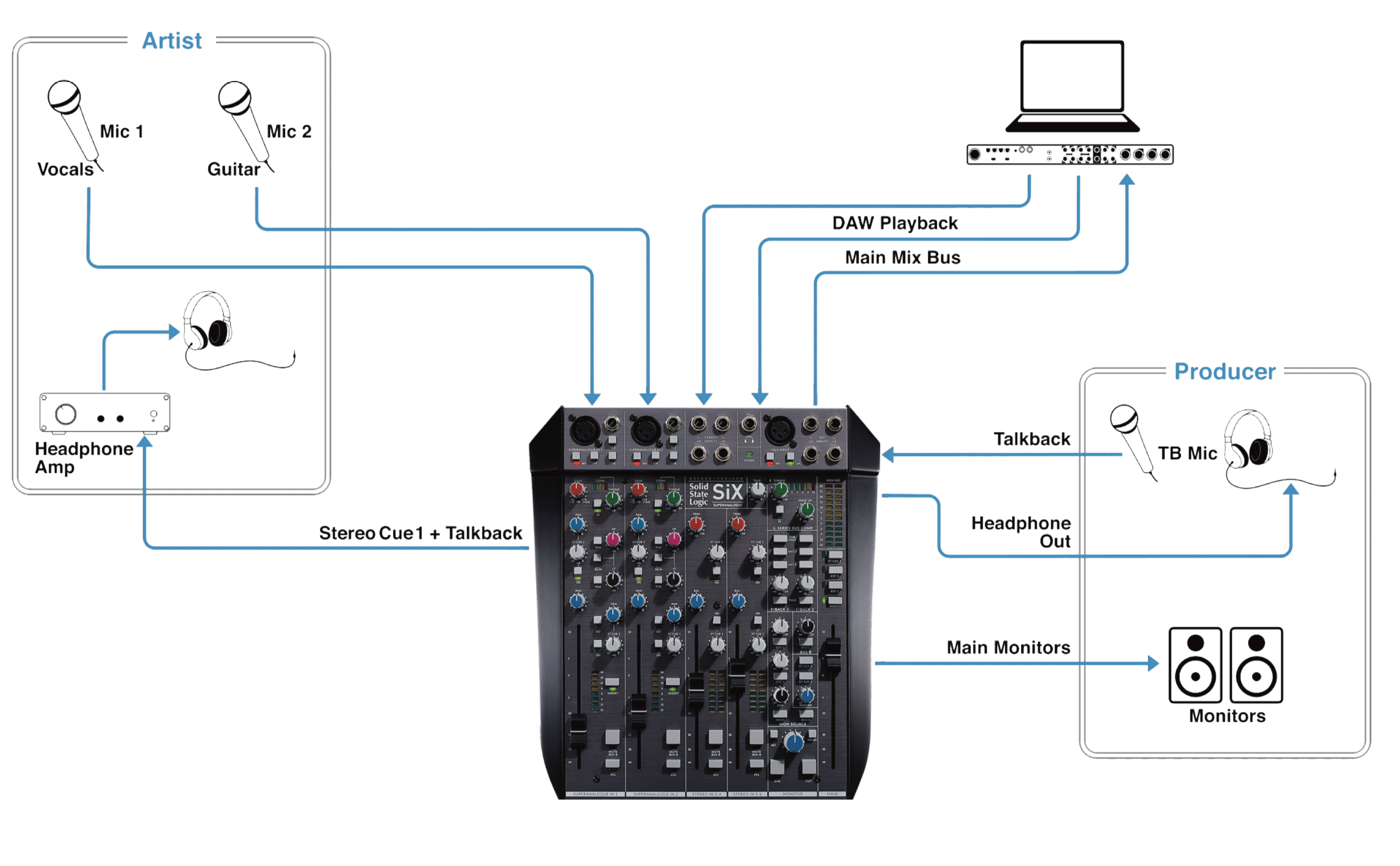
- Mics for Vocal and guitar are connected to the SUPERANALOGUE IN 1 and 2 mic amps and processed with channel compression and EQ
- F/BACK 1 output, fed pre-fader from ST CUE 1, is connected to the artist’s headphone amplifier for monitoring and talkback
- Mics are recorded to DAW from the main mix bus through the stereo G-SERIES BUS COMP compressor
- DAW playback is sent to STEREO INPUTS 3L/4R and then to artist using ST CUE 1
- A second DAW track allowing a separate click track can be fed into STEREO INPUTS 5L/6R if necessary
- An external phantom powered mic is connected to the TALK INPUT and through the listen mic compressor and a dedicated level control to allow the producer to keep in touch with the artist
2. Recording Drums
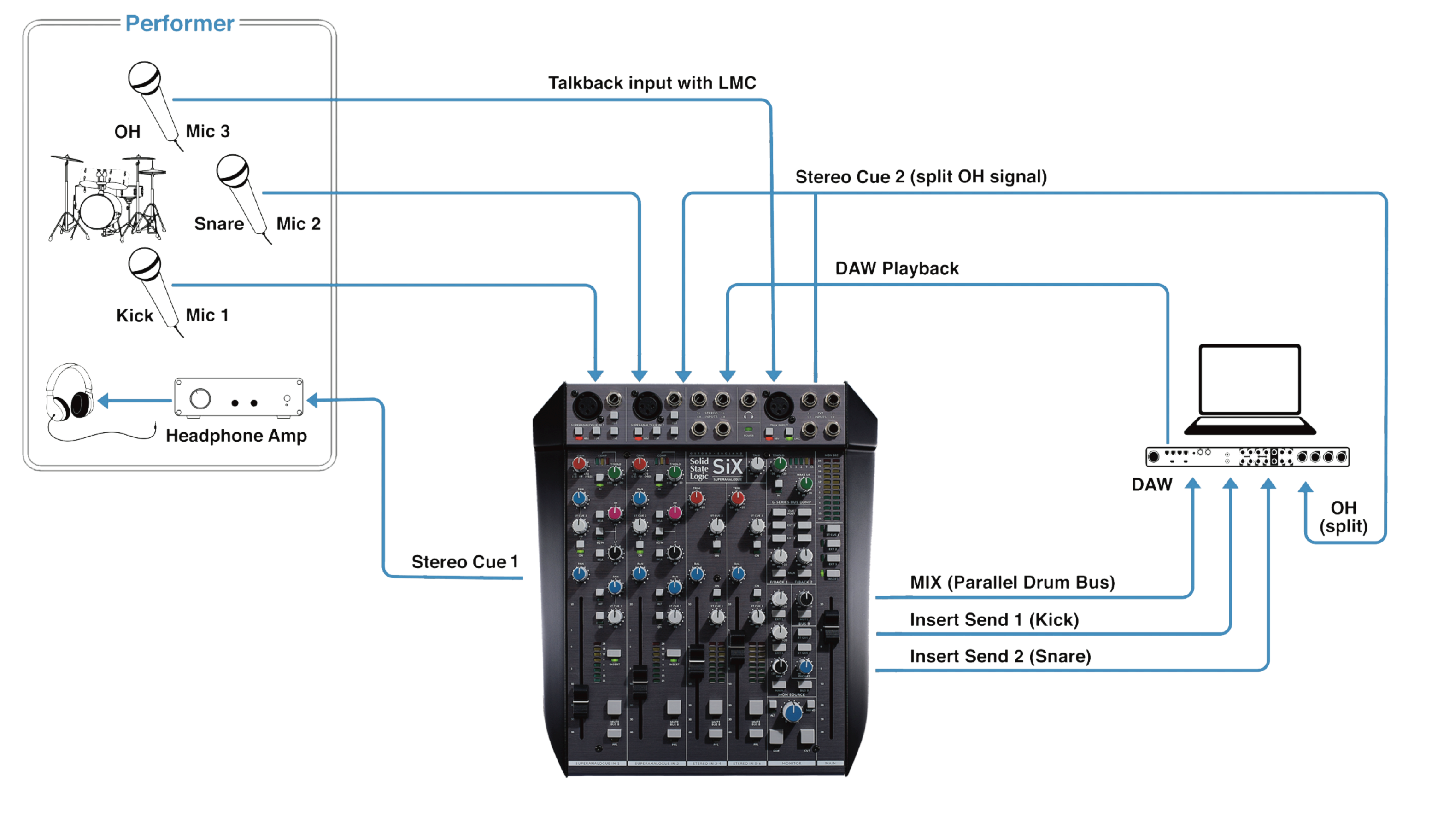
- A classic drum recording technique using 3 mics on a drum kit; kick, snare and mono overhead
- Kick and snare mics are connected to SUPERANALOGUE IN 1 and 2 inputs and are processed with the channel compression and EQ
- Kick and snare are recorded to individual DAW tracks via the insert sends from the SUPERANALOGUE IN 1 and 2 channels
- Overhead mic is connected to the TALK INPUT XLR input allowing it to be heavily compressed through the Listen Mic Compressor if desired
- Overhead mic is sent to Stereo F/BACK 2 output by pressing the TALK button. Stereo F/BACK 2 left is then sent to DAW for recording, while stereo F/BACK 2 right is sent to STEREO INPUT 3L input.
- All three inputs are mixed down through the stereo G-SERIES BUS COMP compressor and recorded as a compressed parallel drum track along with the 3 individual tracks
- DAW playback is connected to STEREO INPUT 5L/6R
3. Music Production – Writing and Tracking
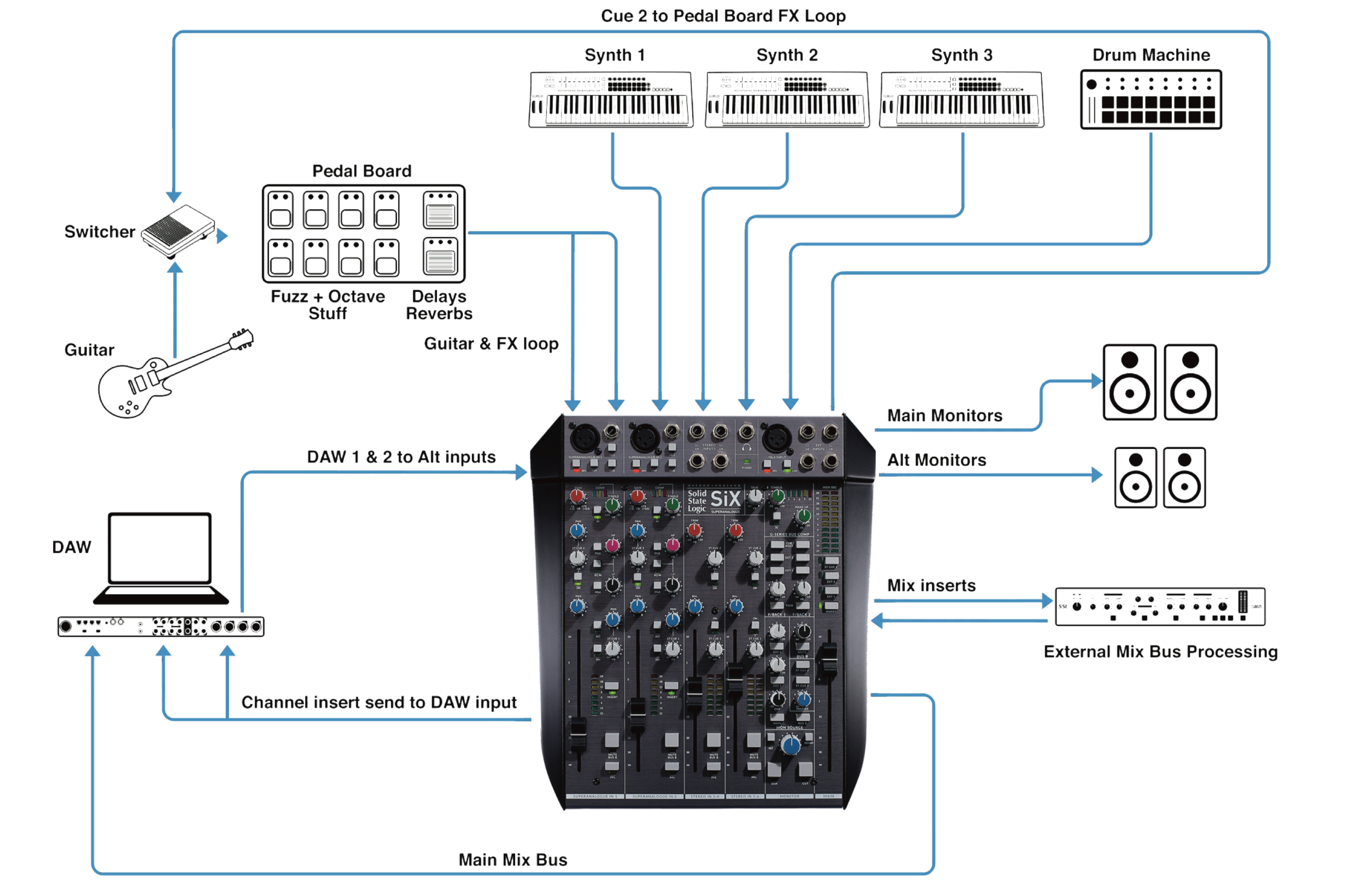
- A guitarist with a pedalboard is connected to SUPERANALOGUE IN 1 and 2 and processed through the channel compression and EQ
- To allow other sources to be processed by the guitar effects and SSL EQ and dynamics, an FX loop can be created by connecting F/BACK 2 to the second input of a guitar input switcher
- The insert sends for SUPERANALOGUE IN 1 and 2 are connected to the DAW input to create a direct record path
- DAW outputs 1 and 2 are connected to the ALT inputs on channels 1 and 2 to allow for switching between live and recording buses for the guitar and effects system using the channel ALT switches
- 3 synths are connected to STEREO INPUT 3L/4R, STEREO INPUT 5L/6R and stereo EXT 1 inputs and a drum machine is connected to stereo EXT 2
- The main mix bus is connected to the DAW for recording through the stereo G-SERIES BUS COMP compressor
- The insert point on the main mix bus can be used to incorporate additional processing
- Main and Alt monitors as well as the headphone outputs offer a range of professional monitoring options
4. Music Production - Mixdown
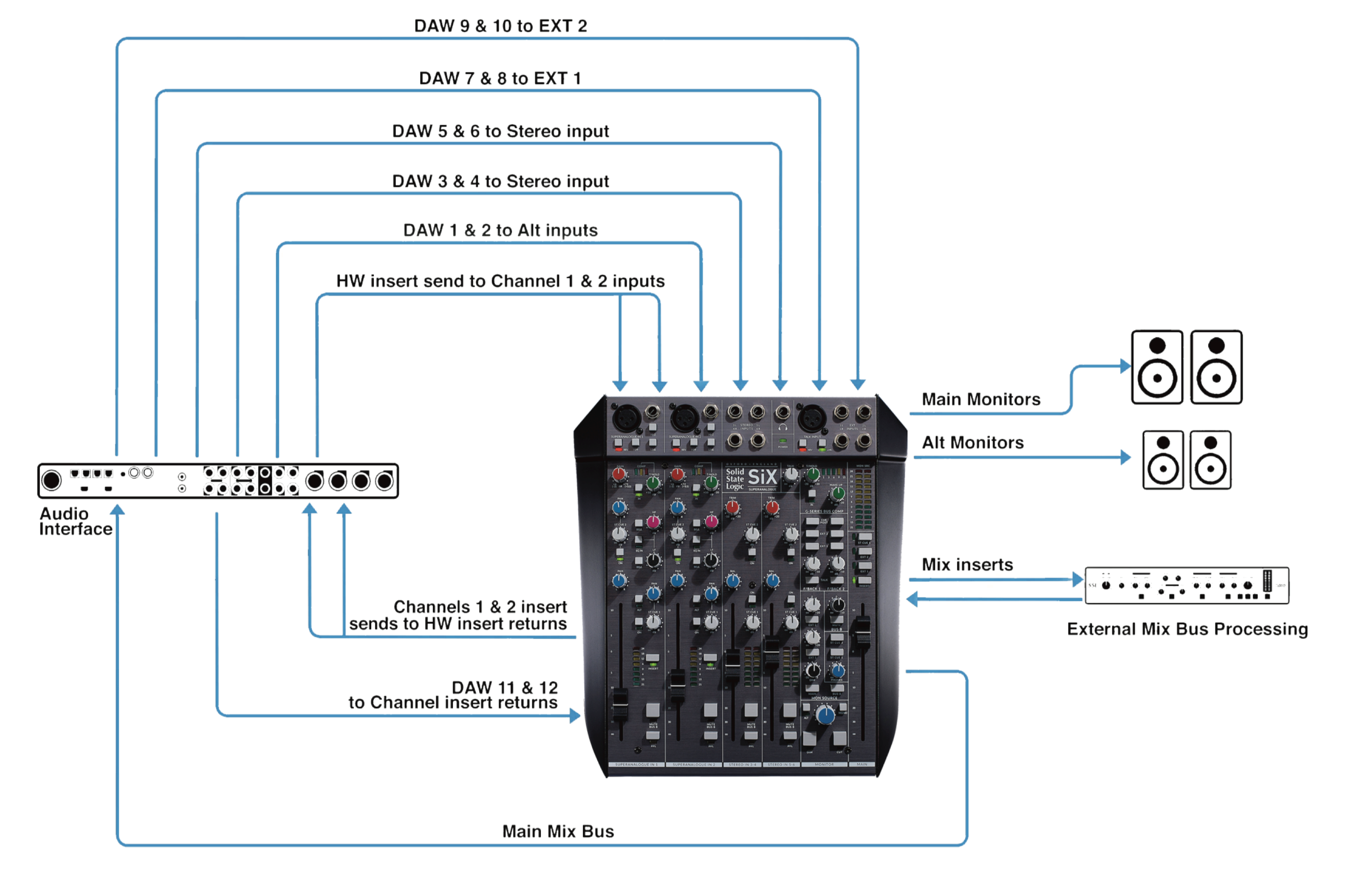
- SiX allows up to twelve channels of SSL analogue summing
- DAW outputs are connected using ALT inputs 1 &2, STEREO INPUTS 3L/4R & 5L/6R and stereo EXT1 &2. The ALT inputs on channels 1 and 2 are summed straight to the mix bus, bypassing the channel processing
- A pair of channels from the DAW can be processed through the SiX channel EQ and dynamics by connected DAW outputs to SUPERANALOGUE IN 1 and 2 and returning the insert sends back to the DAW inputs. DAW outputs 11 and 12 are routed into the channel insert returns and are routed to the mix bus by pressing INSERT on each channel
- The stereo G-SERIES BUS COMP compressor and main mix insert point is available for further processing of the main output
5. On Stage
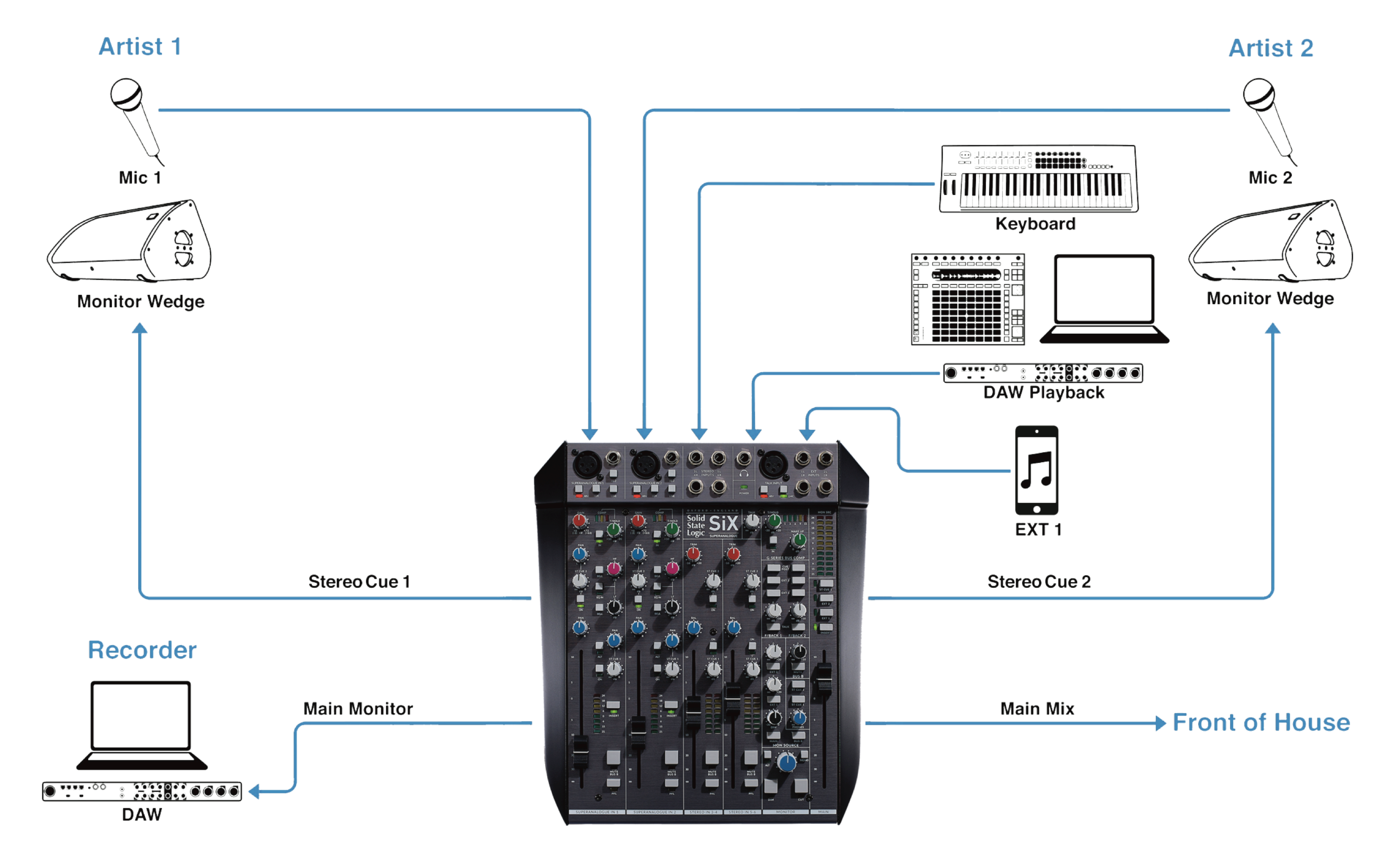
- Two artists are connected to the SUPERANALOGUE IN 1 and 2 inputs and can utilize the channel compression and EQ
- The second artist has a stage piano connected to STEREO INPUTS 3L/4R
- DAW playback is connected to STEREO INPUTS 5L/6R
- A phone/tablet is connected to EXT 1 stereo input for background music playback
- Each artist has their own monitor mix using the ST CUE 1 and ST CUE 2 stereo sends
- The main mix output is fed directly to the PA system through the classic G-SERIES BUS COMP compressor
- The show can be recorded from one of the monitor outputs with MAIN chosen as the monitor source
6. Podcasting/Voice-overs

- Two mic inputs are connected to SUPERANALOGUE IN 1 & 2 through the channel compression and EQ
- Local and remote playback is connected to the STEREO INPUTS 3L/4R and 5L/6R
- Additional stereo inputs can be connected via the EXT 1 and 2 connectors
- ST CUE 1 is used for local headphone feeds and ST CUE 2 is used for remote contribution feedback
- Main mix bus can be enhanced through the stereo G-SERIES BUS COMP compressor
